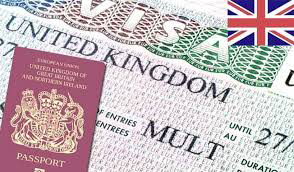Applying for a UK visa can be a complex process, but understanding the steps involved can make it much easier. Whether you are applying for a short visit, studying, working, or joining family in the UK, following the correct procedure ensures a smooth experience. This guide will help you navigate the UK Visa and Immigration application process effectively.
Types of UK Visas
Before starting your application, it is important to determine which visa category applies to you. The UK offers various visa types based on the purpose of your visit. The table below outlines some of the most common visa categories:
| Visa Type | Purpose | Who Can Apply? |
|---|---|---|
| Visitor Visa | Tourism, visiting family/friends, short trips | Tourists, family visitors |
| Student Visa | Studying in a UK educational institution | International students |
| Skilled Worker Visa | Employment in an eligible UK job | Professionals with job offers |
| Family Visa | Joining a spouse, child, or relative in the UK | Family members of UK residents |
| Business Visa | Attending business meetings or conferences | Business professionals |
| Start-up/Innovator Visa | Launching a new business in the UK | Entrepreneurs |
Each visa has its own set of requirements, so it’s essential to apply for the correct one.
Step-by-Step Guide to the UK Visa Application Process
Step 1: Choose the Right Visa Type
Before applying, ensure you select the appropriate visa based on your purpose of travel. The official UK government website provides detailed information about each visa category.
Step 2: Complete the Online Application Form
All UK visa applications must be submitted online. Visit the UK Visas and Immigration website, select the relevant visa category, and fill out the online form with accurate details. Ensure that:
- Your personal information matches your passport.
- You enter correct travel dates and accommodation details.
- You provide honest responses to all questions.
Step 3: Pay the Visa Fee
Visa fees vary depending on the visa type and processing time. The payment is made online using a debit or credit card. Below is an estimated cost for some common visa categories:
| Visa Type | Standard Processing Fee |
|---|---|
| Visitor Visa (6 months) | £115 |
| Student Visa | £490 |
| Skilled Worker Visa | £610 – £1,408 |
| Family Visa | £1,846 |
Additional fees may apply for faster processing or optional services.
Step 4: Book a Biometrics Appointment
After submitting your application, you must schedule an appointment at a Visa Application Centre to provide:
- Fingerprints and a digital photograph.
- Supporting documents (varies by visa type).
Some applicants may be eligible for the UK Immigration ID Check app, allowing them to submit biometrics digitally instead of attending an in-person appointment.
Step 5: Submit Supporting Documents
Each visa type has specific document requirements. Below are some common documents applicants may need:
| Document | Required for |
|---|---|
| Valid Passport | All visa types |
| Proof of Financial Stability | Student, work, and family visas |
| Letter of Sponsorship | Family and student visas |
| Job Offer Letter | Skilled Worker Visa |
| Academic Transcripts | Student Visa |
| Accommodation Details | Visitor and student visas |
Always check the latest document requirements on the UK government website before submission.
Step 6: Attend the Interview (If Required)
Some applicants may be called for an interview to discuss their travel plans. Be prepared to answer questions about:
- The reason for your visit.
- Your financial situation.
- Your return plans after your stay in the UK.
Step 7: Wait for a Decision
After submitting your biometrics and documents, the processing time begins. Standard processing times vary based on visa type:
| Visa Type | Processing Time |
|---|---|
| Visitor Visa | 3 weeks |
| Student Visa | 3 weeks |
| Skilled Worker Visa | 3-8 weeks |
| Family Visa | 12-24 weeks |
Priority and super-priority services are available for faster processing at an additional cost.
Common Reasons for Visa Rejection
Many applications get rejected due to simple mistakes. Below are some common reasons for visa refusals and how to avoid them:
| Reason for Rejection | How to Avoid It |
|---|---|
| Incomplete or incorrect application | Double-check all information before submitting |
| Insufficient financial proof | Ensure your bank statements meet the required balance |
| Invalid or missing documents | Prepare all necessary paperwork in advance |
| Failure to prove intent to return | Provide strong ties to your home country |
| Past visa violations | Maintain a good travel history |
By carefully preparing your application, you can reduce the risk of rejection.
What to Do After Receiving Your Visa
Once your visa is approved, follow these important steps before traveling:
- Check Visa Details: Ensure the visa type, validity dates, and personal details are correct.
- Book Travel and Accommodation: Arrange flights and accommodation as per your visa conditions.
- Understand Visa Conditions: Some visas have restrictions, such as work limitations or reporting requirements.
- Prepare Arrival Documents: Carry copies of your visa approval, financial proof, and accommodation details for immigration checks at the airport.
If your visa is rejected, you may be able to appeal or reapply after addressing the reasons for refusal.
Final Thoughts
Applying for UK Visa and Immigration requires careful planning and attention to detail. By understanding the process, gathering the right documents, and avoiding common mistakes, you can improve your chances of a successful application. Whether you are visiting, studying, or working in the UK, following this guide will help you navigate the UK Visa and Immigration process smoothly.




